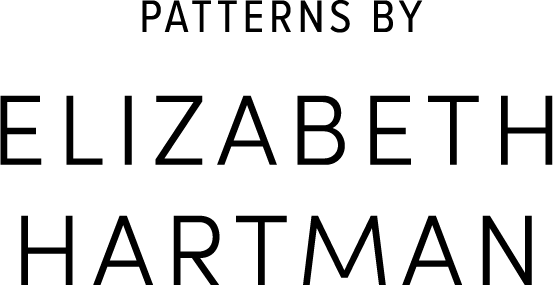Skill Level Guide
Unless otherwise noted, all of my patterns are made using conventional patchwork piecing. This means that the fabric is rotary-cut into squares and rectangles and sewn together using straight or diagonal seams.
Diagonal seams are explained in all of my patterns that include them. The method I use is sometimes called "folded corners" or "stitch and flip." If you've made a patchwork-pieced quilt with stars or triangles, you've probably used some variation of this method.
The skills needed to make my patterns include:
- Rotary cutting
- Following directions and keeping cut pieces organized
- Sewing with a consistent quarter inch seam allowance
I would describe the bulk of my patterns as intermediate-level, but I've heard from multiple beginning quilters that pieced them successfully. (To be fair, I've also heard from more experienced quilters who found the number of small pieces to be fussy.) How difficult you find my patterns will likely be related to how you feel about keeping track of and sewing a lot of pieces.
The web page for each of my patterns includes a skill level rating, from 1 to 5, which indicates level of difficulty in relation to my other patterns.
Skill Level 1 patterns include the fewest and largest pieces, and are the most suitable for a confident beginner. Most of these patterns include pieces no smaller than 1-1/2” x 1-1/2”.
Skill Level 2 patterns have more pieces, some of which may be as small as 1” x 1”, but are generally a little simpler than the patterns with a Skill Level 3 rating.
Skill Level 3 includes most of my patterns for making quilts with a single, repeating, block style. The blocks in these patterns are detailed and include more small pieces than Skill Level 1 or 2 patterns.
Skill Level 4 includes many of my sampler quilts (quilts that include multiple block styles). The blocks in these sampler quilts are no more complex than the blocks in patterns with 1 - 3 ratings, but piecing multiple blocks together involves more time and more pieces. Skill Level 4 also includes a few single-animal patterns that I feel are a more complex than those with a Skill Level 3 rating.
Skill Level 5 includes the most complex of my sampler patterns. These projects include the most pieces, and will likely take the longest to complete.
Regardless of which quilt you’re making, my advice is to take it slow and read ALL of the directions. It’s also a good idea to test your seam allowance and make a sample block with scraps before starting your main project.
You can do this!
